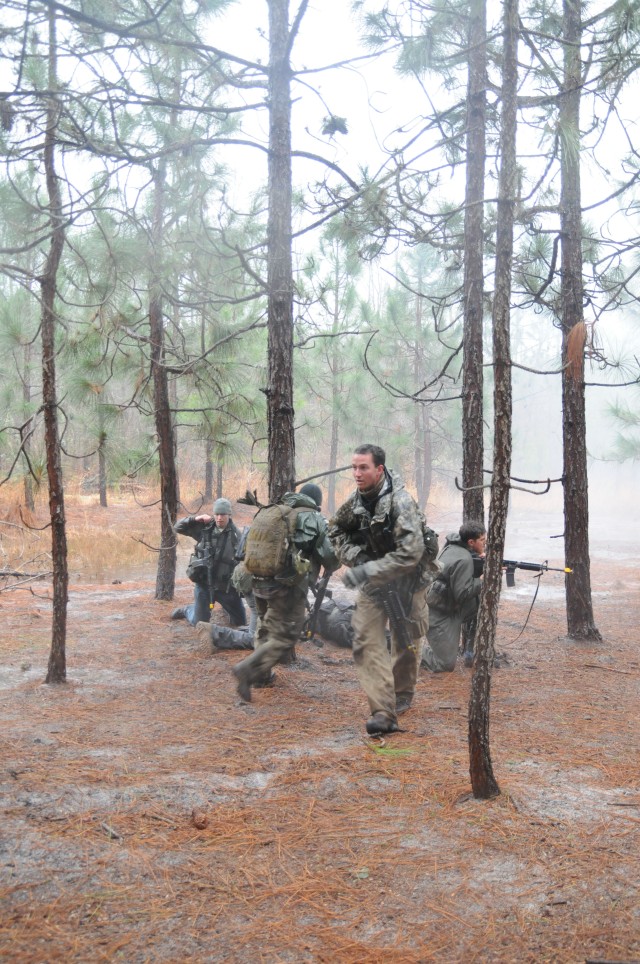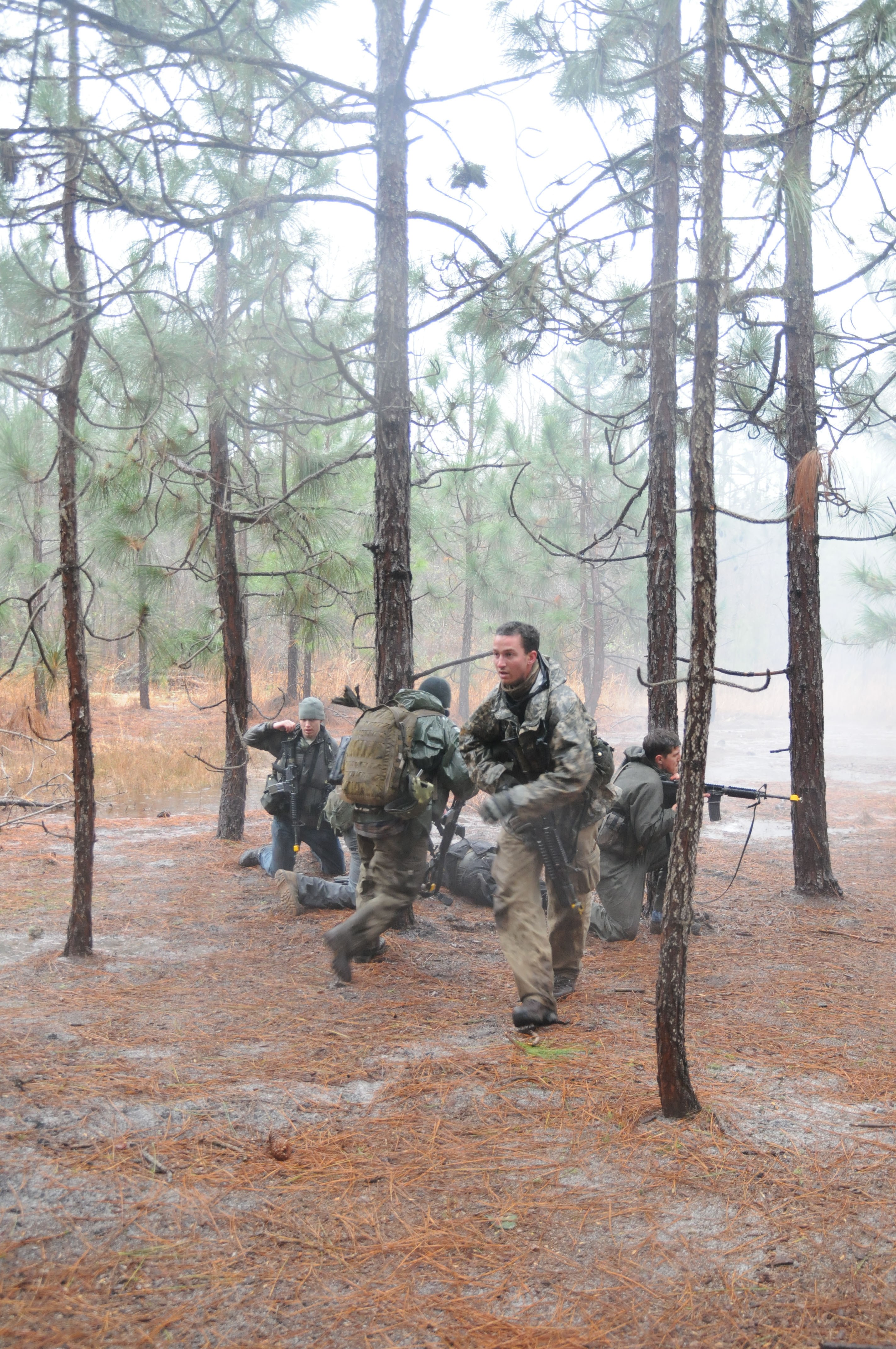
FORT BRAGG, N.C. - There's nothing quite like the real thing and that's almost what Soldiers training to become Green Berets get during the two-week Robin Sage exercise held near the end of the Special Forces Qualification Course.
Robin Sage is held eight times a year and includes many different real-life scenarios Special Forces Soldiers will face with an operational unit. During the most recent Robin Sage exercise, future Green Berets were required to enter enemy territory and rescue an American pilot whose aircraft went down during a mission.
"We want this to be as realistic as possible," said Dave Horne, instructor and trainer. "That's why we use a live person as the dummy. There's nothing quite like flesh and blood, and these guys need to train like it's real."
Before the Soldiers began their mission, Horne and several Robin Sage instructors and participants, hoisted a man dressed as a pilot a few feet up a tree. Once the training area was prepped, the instructors found hiding places. For 30 minutes or so, the man waited in the tree as the rain fell. Then smoke slowly began to fill the woods and machine gun fire began.
"This is a great scenario because there are so many moving parts," said a Robin Sage senior instructor, who asked to remain anonymous for security reasons. "A Special Forces Soldier has to be a critical thinker and use all the resources he has available."
During Robin Sage, future Green Berets operate in the People's Republic of Pineland, where the government has become unstable. One of the missions for Special Forces Soldiers is to try to raise a resistance force strong enough to overthrow the Pineland government. They do this using unconventional warfare tactics.
The stages of unconventional warfare typically follow stages including: psychological preparation, initial contact, infiltration, organization, buildup, combat employment and demobilization. Special Forces work covertly or clandestinely, depending on the environment and the stage of operation.
The senior instructor explained that during each phase, Special Forces Soldiers are conducting different types of missions. During the downed-pilot scenario, the Soldiers were transitioning into the buildup phase. By this point, the Soldiers have built significant networks with the guerilla forces and have recruited and trained new resistance fighters.
"At this phase, SF guys will be working very closely with the resistance forces and probably will take them along on missions," said the senior instructor.
When the future Green Berets finally arrived to the pilot, it was clear that they were leading a team made up of primarily guerilla fighters.
"They got their mission at base camp to come rescue the pilot. From that point, they had 30 minutes to get organized, develop a plan and then get on target," said the senior structor. "That means they had to plan for communications and transportation. Since they have to rely on the locals to get things done, they had to get in contact with them."
The senior instructor said hopeful Green Berets benefit from Robin Sage because of the exercise's realism. If the students cannot get into contact with the "locals," then they must develop a contingency plan and also figure out what happened to their networks. These are situations Special Forces Soldiers face on a daily basis in combat zones around the world. They have to be able to think on their feet under the most extreme circumstances, both Horne and the senior instructor emphasized over and over again.
"This is the last chance most of these guys will have to make a mistake," Horne said. "They can mess up here, and we'll give them advice for the future. Once they get to their units, they won't have the luxury of screwing up."
Fortunately, the future Green Berets were able to rescue the downed pilot. However, the unit suffered several casualties, but the senior instructor said it proved to be a good learning moment.
"Hopefully, the Soldiers can look back and understand what they did right and what went wrong," explained the senior instructor. "That's the real point of Robin Sage and scenarios like these."

Social Sharing